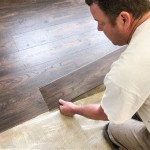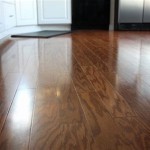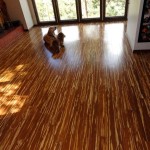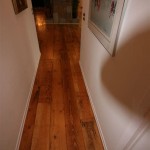Essential Aspects of Installing Glue Down Vinyl Plank Flooring Over Concrete
Installing glue down vinyl plank flooring over concrete is a popular choice for homeowners looking to upgrade their flooring due to its durability, ease of maintenance, and wide range of design options. Glue down vinyl planks require a smooth, level subfloor, and concrete provides an ideal base for this type of flooring. However, before beginning the installation process, it's crucial to understand the essential aspects of installing glue down vinyl plank flooring over concrete.
Subfloor Preparation
The foundation of a successful installation lies in proper subfloor preparation. Concrete subfloors should be clean, level, dry, and free of any debris, dirt, or moisture. Unevenness in the subfloor can lead to buckling or cracking of the vinyl planks, so it's essential to level the surface using a self-leveling compound if necessary. Moisture can also damage the flooring, so ensure that there are no leaks or moisture issues before proceeding with the installation.
Choosing the Right Adhesive
Selecting the appropriate adhesive is critical for ensuring the longevity of the vinyl plank flooring. There are various types of adhesives available, and the choice depends on the specific flooring product and subfloor conditions. Follow the manufacturer's recommendations and opt for an adhesive that is designed for vinyl plank flooring over concrete. Using the wrong adhesive can compromise the adhesion and lead to premature failure.
Plank Acclimation
Before installation, allow the vinyl planks to acclimate to the room's temperature and humidity conditions for at least 48 hours. This step prevents expansion or contraction of the planks after installation, minimizing the risk of buckling or gapping. Store the planks flat and never lay them directly on the concrete subfloor during the acclimation period.
Layout Planning
Planning the layout is essential to ensure a cohesive and aesthetically pleasing installation. Determine the center of the room and work your way outward, ensuring that the planks align evenly and create a balanced appearance. Use spacers to maintain equal gaps between the planks and the walls or other objects.
Glue Application and Plank Placement
Apply the adhesive to the concrete subfloor using a trowel with the recommended notch size. Spread the adhesive evenly and avoid applying too much, as excess adhesive can squeeze out and cause unsightly ridges or gaps. Begin placing the vinyl planks by pressing them firmly into the adhesive. Use a tapping block and hammer to ensure proper adhesion. Roll a heavy flooring roller over the planks to eliminate any air pockets and enhance bonding.
Trimming and Finishing
Once the main area is complete, trim the planks around the edges and corners to fit the shape of the room. Use a sharp utility knife and a straight edge for precise cuts. Seal the edges and any transitions with appropriate moldings or trim pieces to provide a finished and professional look.
Post-Installation Care
After installation, allow the adhesive to cure for the recommended time before exposing the flooring to heavy traffic or furniture. Protect the flooring during curing by placing mats or cardboard under furniture legs. Regular cleaning and maintenance using a manufacturer-recommended cleaner will preserve the appearance and longevity of the glue down vinyl plank flooring.

How To Install Glue Down Vinyl Plank

How To Prepare A Concrete Floor For Vinyl Flooring Parrys

How To Install Glue Down Flooring Over Concrete Subfloor Ll Formerly Lumber Liquidators

Easy Ways To Install Vinyl Plank Flooring On Concrete

How To Install Plank Vinyl Glue Down

How To Install Glue Down Vinyl Plank

Laying Vinyl Planks The Right Way Expert Guide By Fantastic Handyman

How To Install Vinyl Plank Flooring On Concrete Step By Guide

How To Install L And Stick Vinyl Plank Flooring The Nifty Nester

How To Install Vinyl Plank Flooring On Concrete Base
See Also






